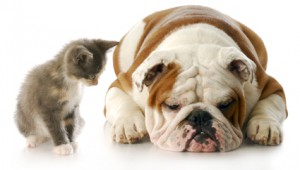Signs Your Pet May Have Joint Pain
Canine Pain Problems
Just because your pet dog cannot express itself does not mean it does not feel pain. They feel muscular and joint pains just as we do. As thinking animals, it is easier for us to express and seek medical attention. However, continuous coexistence with pets has taught people to notice when their pet is in pain. Symptoms of joint pain in dogs are as follows:
- Hobbled walk, change in gait or awkward movements
- Lifting a leg frequently and holding it off the ground
- Problem in getting up from sitting or lying position
- Slackened or reduced activities
- Visibly swollen legs
- Trouble getting into the car or climbing stairs
- Aversion to petting and stroking
- Trembling, restlessness, panting, increased heartbeats, excessive salivation, appetite loss

Common Causes of Joint Problems in Dogs
Pain is a complex thing, especially when it concerns your pet. It is very hard to detect the exact cause, nature, spot and severity of pain. Pain can be acute or chronic, mild or severe and can be caused by several factors.
- Ageing: dogs experience age-related pains just as we do
- Genetic and breed-specific problems: bigger the breed, more the problems
- Injuries and pet abuse
- Poor nutrition
- Obesity
- Post-surgery pain
- Degenerative joint disease such as canine arthritis affecting hips, spine, shoulders
- Inherited /developmental problems such as hip dysplasia and elbow dysplasia
- Other: cancer, Lyme disease
Treatment
We can generally divide pain treatment into surgical and non-surgical. Before you undertake any treatment, it is recommended that you consult your veterinarian.
Surgical: Hip replacement, arthroscopic cleaning of joint, triple pelvic osteotomy
Non-surgical:
- Analgesics: Non-steroidal anti-inflammatory drugs (NSAIDs), narcotics or opiates, corticosteroids
- Dog Joint Supplements: Omega-3 fatty acids, amino acids, vitamins, glucosamine, chondoitin
- Laser therapy, heat treatment, hydrotherapy, and massage
- Application of topical liquids/creams
- Mild exercise, weight control and dietary changes

